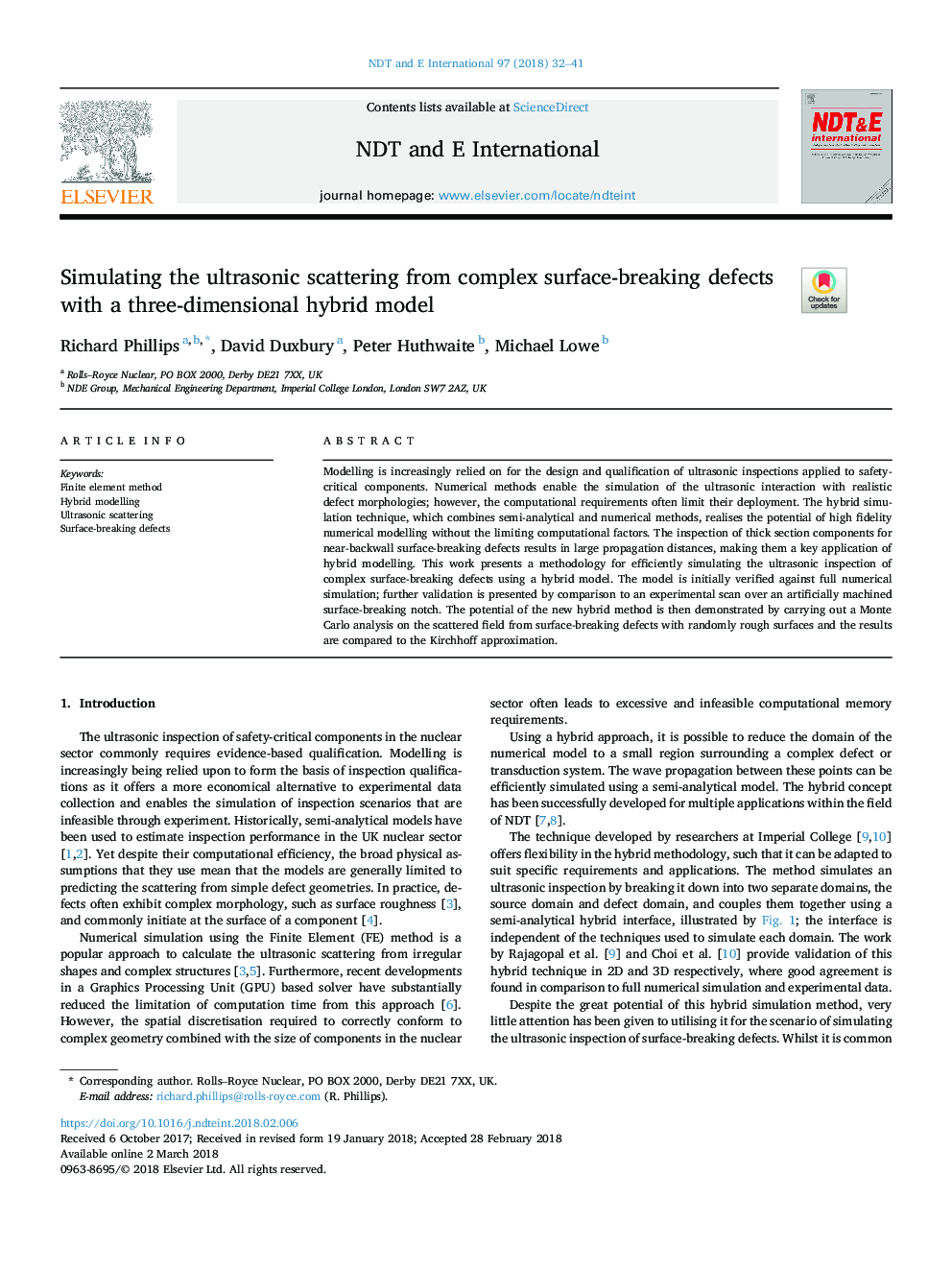| Article ID | Journal | Published Year | Pages | File Type |
|---|---|---|---|---|
| 6758251 | NDT & E International | 2018 | 10 Pages |
Abstract
Modelling is increasingly relied on for the design and qualification of ultrasonic inspections applied to safety-critical components. Numerical methods enable the simulation of the ultrasonic interaction with realistic defect morphologies; however, the computational requirements often limit their deployment. The hybrid simulation technique, which combines semi-analytical and numerical methods, realises the potential of high fidelity numerical modelling without the limiting computational factors. The inspection of thick section components for near-backwall surface-breaking defects results in large propagation distances, making them a key application of hybrid modelling. This work presents a methodology for efficiently simulating the ultrasonic inspection of complex surface-breaking defects using a hybrid model. The model is initially verified against full numerical simulation; further validation is presented by comparison to an experimental scan over an artificially machined surface-breaking notch. The potential of the new hybrid method is then demonstrated by carrying out a Monte Carlo analysis on the scattered field from surface-breaking defects with randomly rough surfaces and the results are compared to the Kirchhoff approximation.
Related Topics
Physical Sciences and Engineering
Engineering
Civil and Structural Engineering
Authors
Richard Phillips, David Duxbury, Peter Huthwaite, Michael Lowe,
